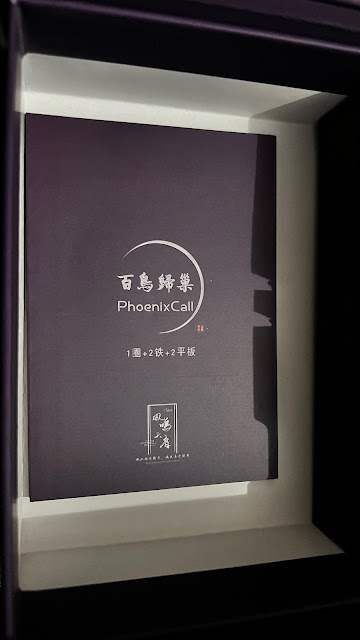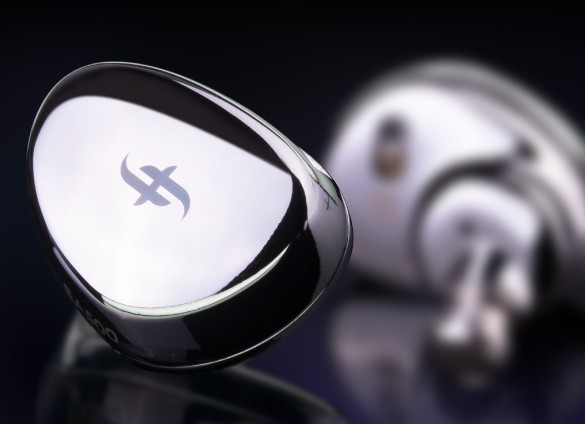Rainbow in the Dark: Celest PhoenixCall Review
By ZD
If there's one thing to note about the current IEM space; it's that as manufacturers all compete in the race to the bottom to bring the best performance to price ratio and as this continues IEMs that performed at the $500 price point can be found in the sub-$100 territory and even the sub-$50 and even sub-$20 territories exist now and are quite competitive at this point as well. The downside of all this is that a lot of them tend to all sound very similar and very rarely standout despite being good. A neutral target based on Harman with a slight bass boost is constantly mentioned again and again and again and again by reviewers to the point where the market is starting to get very saturated with these great deals and no one is really taking any risks or standing out anymore. Enter Kinera's budget sub-brand, Celest.
Kinera is a well known name in the ChiFi space bringing some very well build, good performing, and interestingly tuned IEMs to the market ranging anywhere from $60 upwards of $500+ and they want to trickle down some of that interesting goodness to the masses and started their sub-brand Celest. This sub-brand have brought some interesting competitors to the game including the Pandamon and Gumiho which implement Planar drivers in unique ways that aren't just another entry into the Planar Wars brought on by the 7Hz Timeless.
All that long, but necessary preamble out of the way, we can now talk about the star of this review. The newly released, $130, Celest PhoenixCall. The PhoenixCall IEM implements a very unique driver setup of a 1x 7mm Dynamic Driver, 2x Custom Balanced Armatures, and 2x 6mm Micro Planar Drivers (Flat Panel Drivers) the latter especially has not really been heard or or utilized before but that is very much in Kinera/Celest to be very experimental and unique with their driver setup choice as well as their tuning which we will go into shortly.
Before we get into the sound performance we can't ignore the fact that these IEMs, especially in their Purple/Blue colorway is absolutely stunning. Even the secondary fully transparent colorway option is pretty cool because you really get to see just how their unique driver is placed within the IEM although this transparent look has certainly been done before but those who enjoy an understated though still cool looking IEM design will most definitely enjoy the look especially since the beautiful Phoenix faceplates are showcased on both colorways. Each colorway also comes with a gorgeous cable that doesn't just match but is also incredibly well built and it's no surprise Kinera sells several of their cables separately from their IEMs. This is the first time with the many IEMs I've tried where I actually use the stock cable and enjoy it. I'm very picky with my IEM cables so that says a lot. It's premium feeling and doesn't have any ugly cable memory and the earhooks are properly shaped and well formed for comfort. The cable alone is worth at least $30 and is available in 3.5mm and 4.4mm terminations.
Now, to get into the meat and most important part of these IEMs, the sound. According to the official Celest/Hifi Go description of the IEMs tuning it is an "overall bright sound with deep and elastic bass that is more gentle and relaxed. The midrange has a solid and natural sound, while the high frequencies are clear, bright, and clean." Now, there are some truths behind the marketing material, but I also think their representation of the IEM through words is certainly a bit different from the actual experience though this isn't necessarily a bad thing.

Here is a graph comparing some of the most technical IEM's under $500 to compare against the Celeste PhoenixCall.
First off let's talk about the bass which they describe as "gentle and relaxed". I don't know what kind of mad scientists work at Celest who think that their bass is gentle or relaxed or perhaps we have differing wording on how we'd describe the lower frequencies of this IEM. The bass of the PhoenixCall is what I'd describe as velvety smooth (which somewhat lines up with their descriptor) but at the same time has very strong punch without being muddy. I recall another reviewer, who's name unfortunately alludes me, describe the bass response as essentially a subwoofer within the IEM and this is a very apt comparison as the set can certainly rumble when it calls for it and those times it is all but "gentle". The bass is predominately sub-bass focused which is perfect for me because I don't want too much mid-bass as I feel it sometimes overwhelms the mids or covers up fine details in playback depending on the tuning and execution of the IEM, but this is where the PhoenixCall stands out is how it has just enough mid-bass presence to give that extra punch some entirely sub-bass focused IEMs lack, it's not because it's the only IEM to do this, but its how well they do it in my opinion. This also causes the IEM to have an extremely smooth flow and synergy between the sub and mid bass making the lower end of it's tuning sound absolutely fantastic and like nothing else in my collection. The bass also has great attack and recovery especially considering it's solely using the Dynamic Driver to achieve this and its quality is almost to the level of some Planar Driver IEMs I've heard in terms of executing this feat. Even as it enters the lower mid frequencies it it so smooth it doesn't bother or hamper this region of the frequencies at all.
On to the mid frequencies; due to it's heavy V-Shaped tuning nature the mids are slightly recessed, but emphasis on "slightly". Unlike IEMs like the Moondrop Blessing 2 and especially the Blessing 3 where the midranges recessed nature can sound thin or virtually anemic the mid range of the PhoenixCall is still forward enough where vocals seem more cleanly centered or focused more so than lacking in dynamics or presence. It's interesting to see how the PhoenixCall compensates for its recessed mid range through the aggressive bumps in the low and high end assisting the mids rather than hurting them which we end up seeing in several aggressively V-Shaped tuned IEMs. Instruments that are represented in this frequency do not feel lacking at all and as a result even end up helping vocals to not seem so drab and boring. Female vocals especially have a great, sultry tone to them and male vocals aren't hampered too severely like we see in IEMs like the Moondrop Blessing 3 where male vocals just seem too bright and have some power torn out from them. Overall, despite the fact that this should have been the weakest performing part of the IEM and arguably it still is, it is still very well executed and has great energy and is not lacking in the least. On paper this is most likely due to 1 of their Balanced Armatures solely focused on the midrange and the other BA focused on the mid high frequencies.
Moving onto the higher frequencies this is where Celest put a lot of focus not just into its tuning, but the fact that 1 of the Balanced Armatures is used to dedicatedly handle the mid-high frequencies and the 2 Micro Planar Drivers are utilized to handle the ultra high frequencies so those 3 drivers alone handle everything from the 1.5k region all the way to the 15k region. The highs are spacious, airy, technical; instruments like cymbals and higher pitched percussion are pushed very much forward though they certainly don't get to the point of sounding sibilant ever. As Celest themselves say, the treble area is very bright, but I adore the fact that it stays just bright enough without ever being too much, at least not to my ears. The way the PhoenixCall handles its highs are done so in a way I would to see other IEM manufacturers try.
As we are talking about IEMs and also partially due to its tuning the PhoenixCall has what I would call a medium to medium small soundstage, but it never sounds claustrophobic or small at all and has enough space and depth to breath where music just sounds so neatly presented with just enough energy to never seem lacking while also avoiding any chance of being fatiguing. The soundstage is also helped by the technicalities of the PhoenixCall and its fantastic imagine and instrument separation. From its tuning to its technical abilities the PhoenixCall is truly something to behold.
Powerful, rich, not overwhelming bass, combined with a mid range that is still strong and dynamic despite being recessed compared to the frequencies its flanked by and pair those with an incredibly well executed and detailed high frequency comes together for a smooth listen that is not lacking in technical performance at all and it's nice to have an IEM where I don't have to choose between it being fun or technical and I can finally have both. Bass drums and basslines are nice and upfront while vocals remain centered and forward enough to not get buried by the bass rumble, every cymbal hit all the way to the very last sound of its decay and snare drums have authority, synths are dynamic, and nothing is entirely sacrificed despite it's V-Shaped signature. The music truly envelops you and immerses you deeply with this IEM. All 3 frequency ranges all end up helping each other rather than hurting each other and it's such a treat to find an IEM that does this.
Only the most demanding "bass-sluts" or people who daily driver $2000+ IEMs may find this IEM lacking, but for everyone else, the majority, this is a great, solid set that finally lets you have not just a little bit of everything, but a lot of everything you could want in a fun and detailed listening experience and these are my new daily driver IEMs that I find hard to give a break and go back to some of my other sets that cost even twice as much as this one. They either are lacking in bass, or have more tapered treble without presenting as much detail or even if they show more detail or marginally more technically more proficient are not as fun sounding as the PhoenixCall.
In summary I absolutely adore the PhoenixCall for multiple reasons. It's bold, unique driver setup and out of the ordinary fantastic tuning help it stand out not just as an experimental IEM, but a great one especially in it's sub-$200 territory where, despite being an incredibly competitive price bracket is, it stands out. Pair this with a look that also stands out while being gorgeous in the process is more than appropriate to compliment its entire presentation and package. The sub-$200 is growing increasingly congested and stale and Celest's PhoenixCall is the adrenaline syringe hero we IEM enthusiasts truly needed.











Comments
Post a Comment